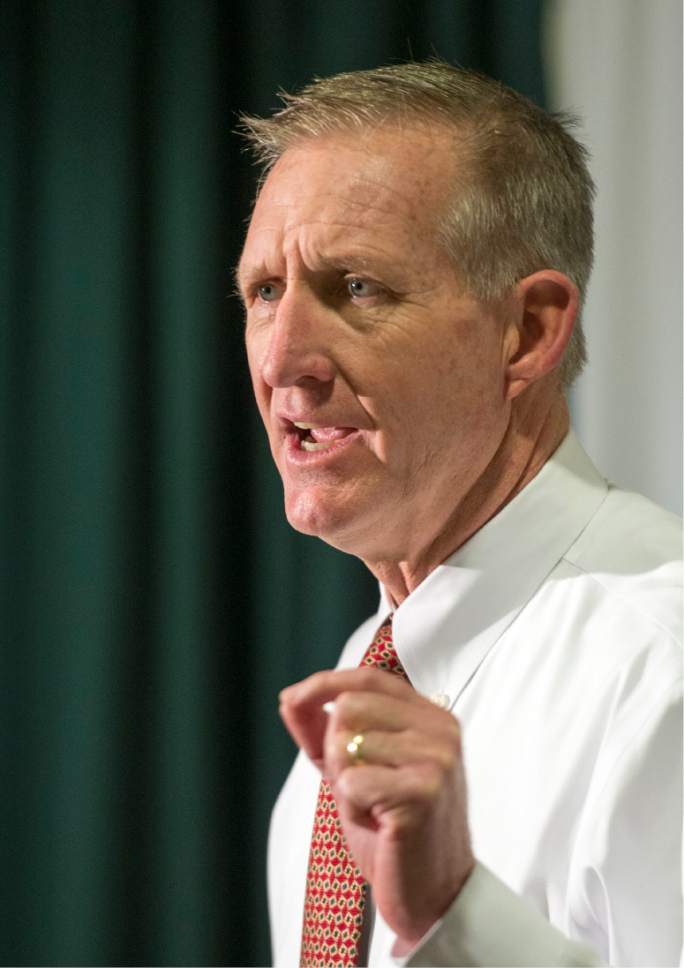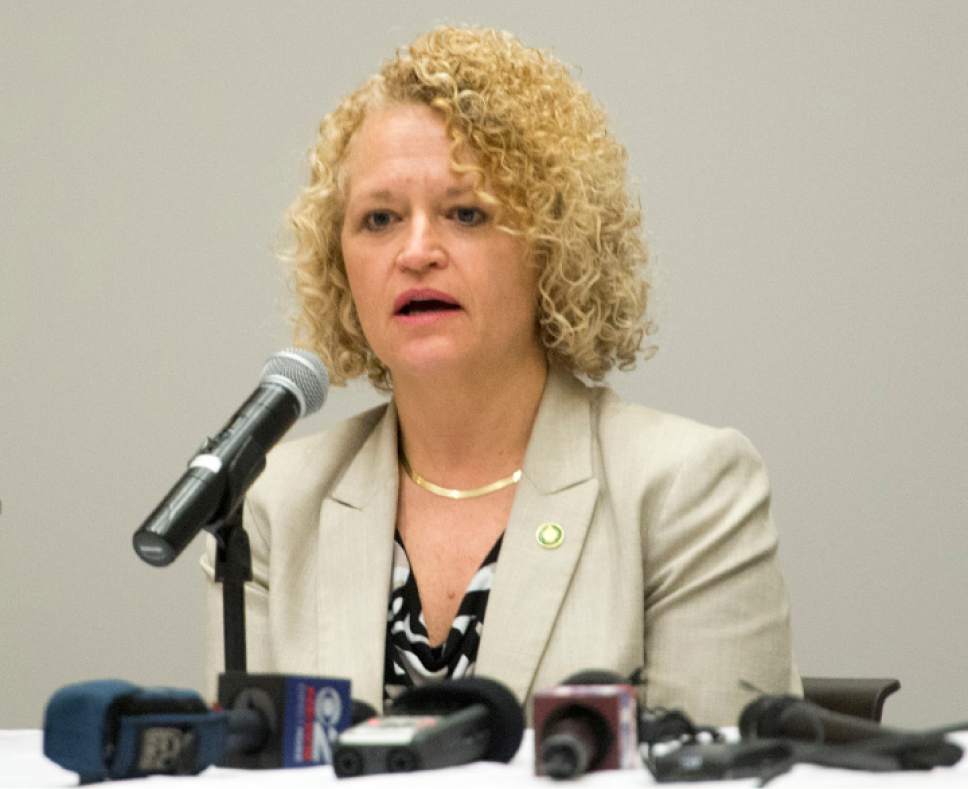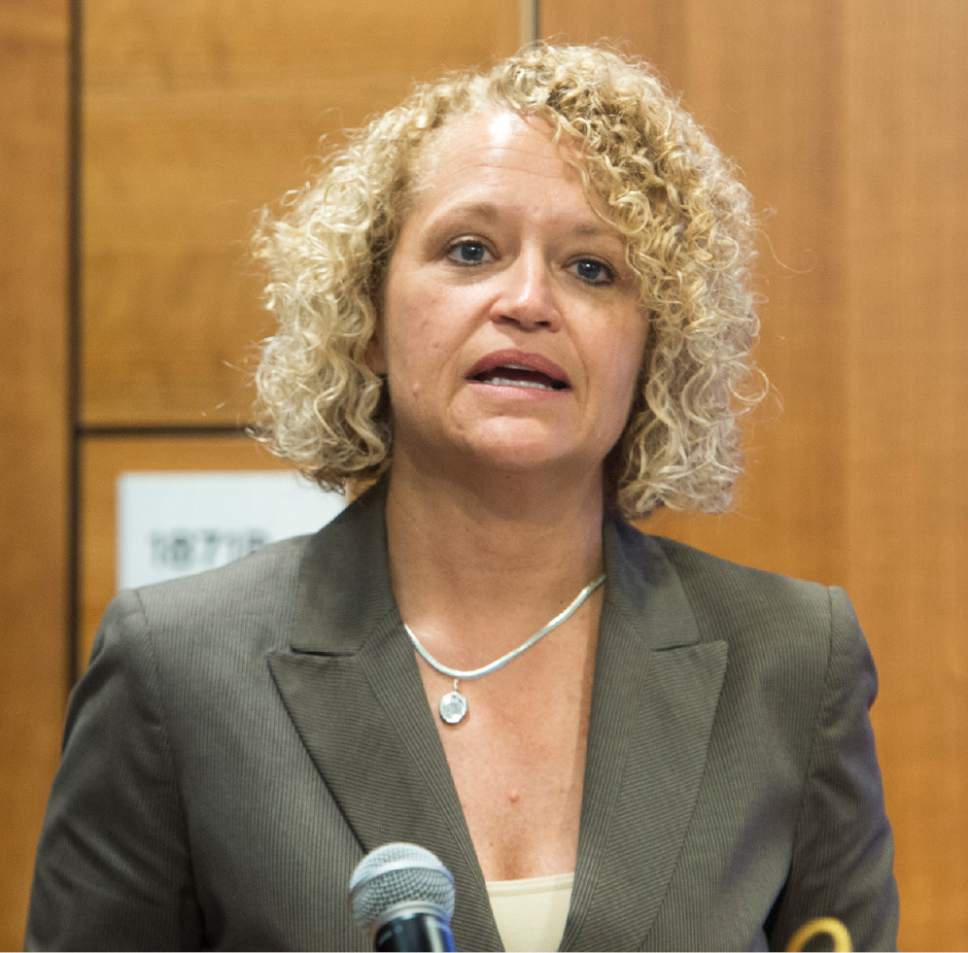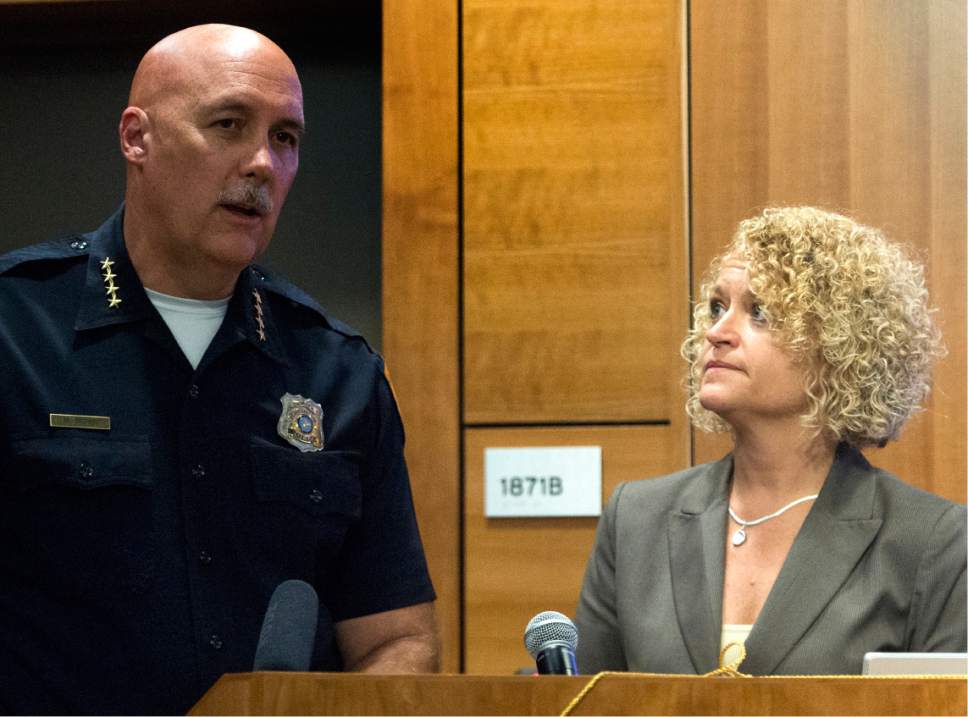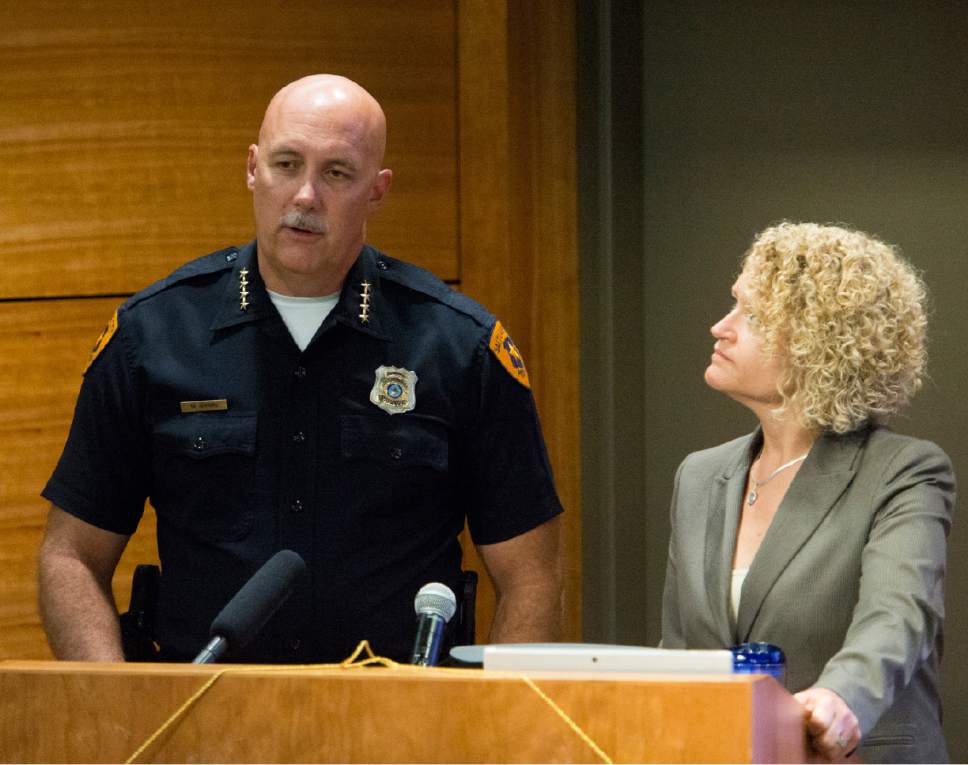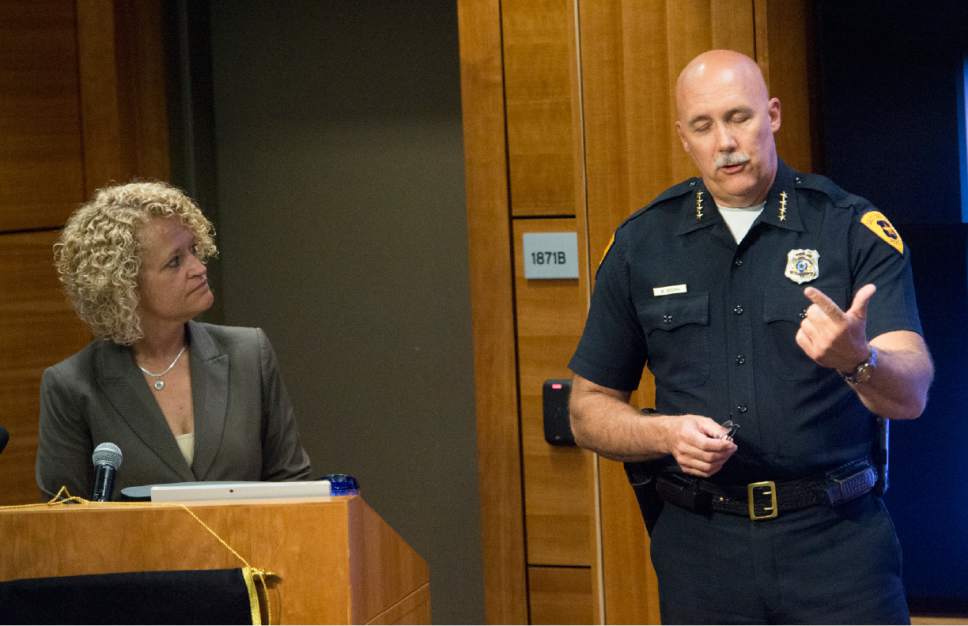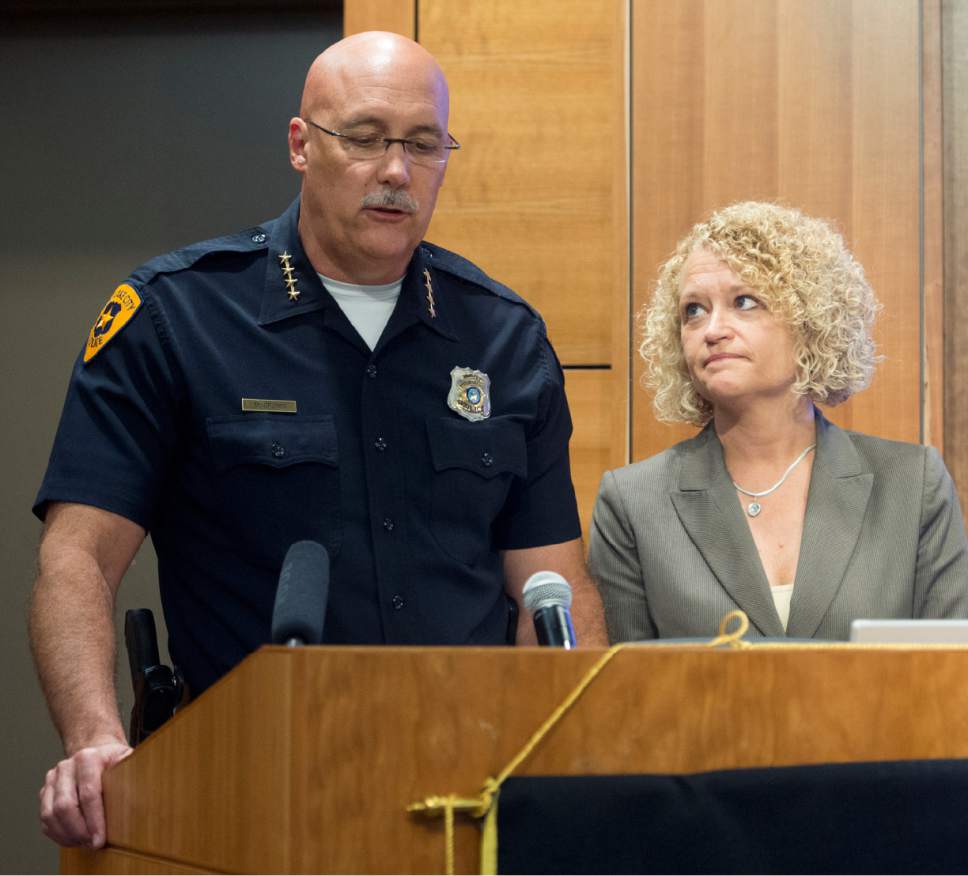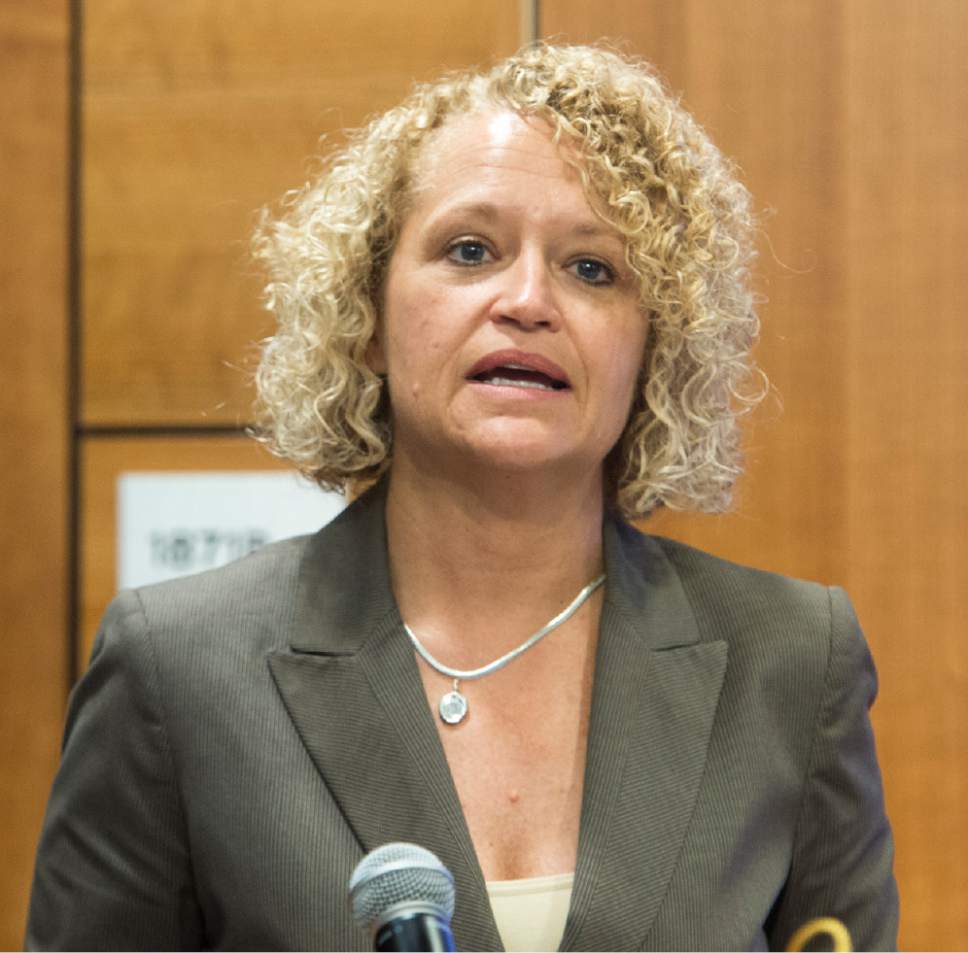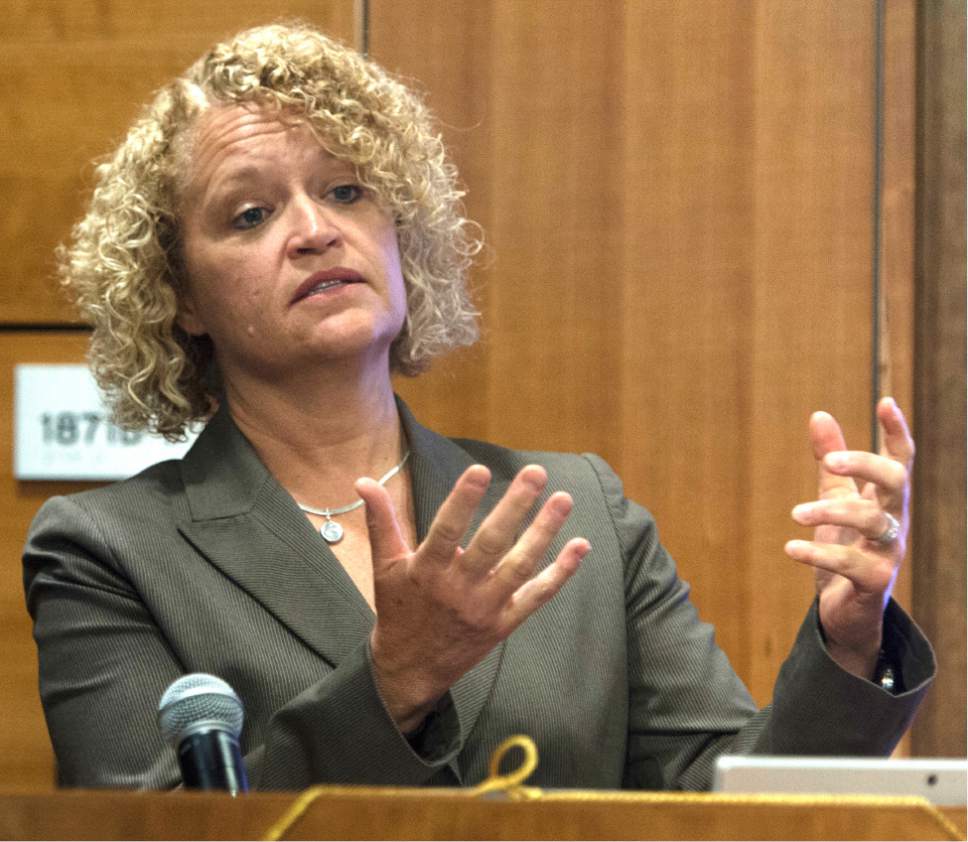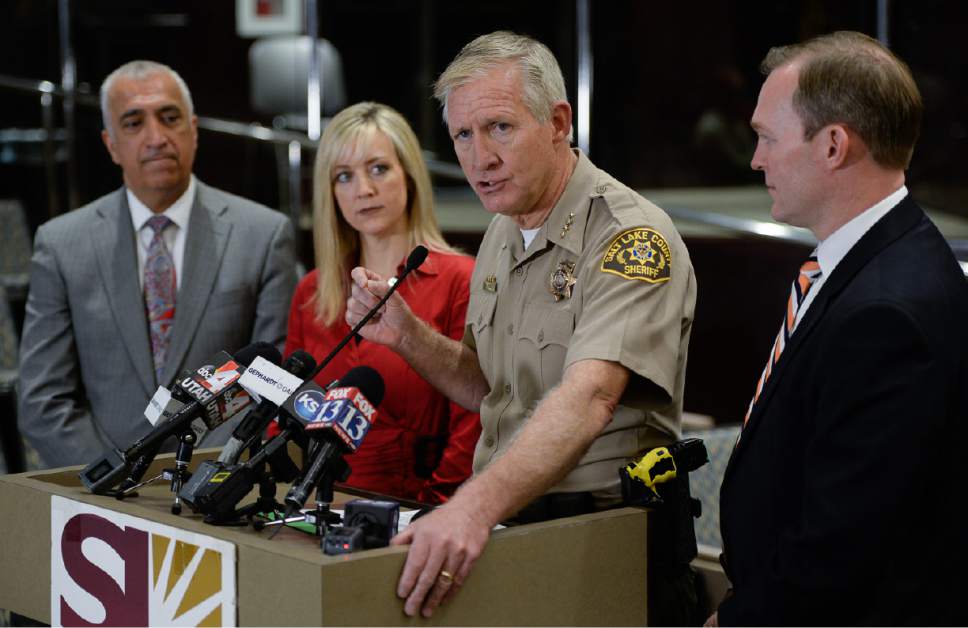This is an archived article that was published on sltrib.com in 2017, and information in the article may be outdated. It is provided only for personal research purposes and may not be reprinted.
Selected late last month to become Moab's police chief, Salt Lake County Sheriff Jim Winder said the only thing he runs anymore is his mouth.
"But I doggone sure have the right and the opportunity to do that," he said.
As Salt Lake County leaders gathered Tuesday to announce hoped-for changes to their public-safety program that would require twice their per capita share of a state grant fund, Winder had another such opportunity, and he used it to expound on criticisms of Salt Lake City and its police chief, Mike Brown.
Winder said Brown and the city have blamed his jail booking restrictions for lawlessness around the 210 S. Rio Grande St. shelter but that Brown could empower his officers to break up congregations of known lawbreakers, issue citations and seize their narcotics.
"It doesn't seem like rocket science to me," Winder said. "If I see 15 people standing in a scrum, one guy with a backpack and a bunch of dope being dealt out of it, go in there and grab him. If the argument is that we can't grab them because we can't take them down to Jim's jail, that's ludicrous. Because what those people care about is their dope and their money. They don't give a rat's patootie about spending three days in the jail."
Brown and Salt Lake City Mayor Jackie Biskupski responded Tuesday afternoon with a hastily arranged news conference at the city's Public Safety Building.
Biskupski said it's easy for "people" — meaning Winder, who in late March released a list of 21 short-term recommendations for the Rio Grande St. area — to "stand in front of microphones and act as if they have figured out a path forward that's been vetted and is funded and that we are somehow just not latching onto that."
"It's frustrating for the city to have partners who are engaged in this kind of activity," continued Biskupski, who previously worked under Winder as an administrator and received his endorsement during the 2015 election.
Winder had been joined in County Council chambers earlier in the day by County Mayor Ben McAdams and District Attorney Sim Gill, who focused less on perceived city shortcomings even if they did nothing to walk back Winder's claims.
They focused instead on the county's request for $8 million of $12 million in state funding over the next two years for treatment related to the Justice Reinvestment Initiative, or JRI. The county expects an answer before the funds become available July 1.
The thought behind the JRI when the state Legislature passed it two years ago was that by reducing penalties for drug crimes and applying incarceration savings toward substance-abuse and mental health treatment, the state could more effectively reduce crime.
With two-thirds of those state funds over two years, or $8 million, the county said, it would:
• Retain 63 treatment beds currently funded through onetime county funds in an innovative law enforcement program dubbed "Operation Diversion" that gave low-level offenders a choice between jail or addiction treatment. Those beds have been kept full with volunteer clients who walked in to sign up at the Salt Lake City Police Department's Community Connection Center — where as of mid-May there was a waiting list of 120.
• Using $5 million of that funding, establish a "Diversion Court" in which offenders would be given an opportunity to beat their charges by completing treatment.
McAdams said that's expected to improve rates of success after at least 54 of 68 clients given the "jail or treatment" choice last October ended up leaving treatment before completion. The county's Drug Court primarily serves people with felony charges, whereas Diversion Court would focus on misdemeanors.
• With $2.3 million, expand the county's Intensive Supervision Program, in which case managers and officers visit so-called "high-risk clients" at their residences and worksites to ensure their success. Clients would increase from 200 to about 370.
• Create a $170,000 pilot program that would make behavioral health experts available to Unified Police Department officers, who answered 3,500 to 4,000 psychiatric calls last year, according to Gill.
• Add 10 behavioral health treatment beds to support the county's Drug Court, doubling the number available, at a cost of $650,000.
"If we continue to hold people in need of treatment because a treatment bed is not available, then we will continue to misuse the jail as a warehouse," Gill said. "Jail beds should be used to incarcerate hardened criminals, not as a holding area for people in need of treatment."
Asked why Salt Lake County should get more than half the state's funding when it accounts for just over a third of the population — as Winder drew laughs by quipping that "I asked for the other half to go to Moab" — Gill said that Salt Lake County's programming gives it the platform to succeed right away.
"We will make the largest, quickest impact on criminal justice reform," he said. The county's grant application says that 75 percent of the state's homeless population resides there.
Winder credited state legislators for "a hell of a lot of money" and for having pure intentions, and praised service providers for making needed changes.
After saying that "it remains to be seen if others are going to put those chips in the game," he made no secret of whose chips he felt were absent.
"We had commitments and promises and we were working along fine and dandy, and it wasn't until the pressure really started to mount about having to make these other collective changes, which are very city-specific, that this angst began to arise," he said.
In late March, Winder issued his 21-point plan — met with relative silence by Salt Lake City officials — which includes a call to cut the shelter's population from 1,100 to 200 by summer and establish a tent city nearby.
Biskupski said some of Winder's suggestions are unconstitutional, others are already being done and others have no funding to support them.
"You can bring ideas forward, but if you don't have a funding mechanism for it, there's only so much the city can do on a statewide problem," Biskupski said, adding that the city has met with the county "almost weekly" and that if the county feels the city isn't engaged enough, "I don't know how much more time we can give them."
Winder said the county "begged and pleaded to have substantive changes occur well before the warm weather started and we did not see it and I'm telling you it ain't going away next year, either."
Visible changes are needed, in part, he said, to reassure the taxpaying public that progress is being made.
Winder, who said he and Brown are still not on speaking terms, has said he hand-delivered to Salt Lake City patrol officers a memorandum with suggestions, and he elaborated on the content of that note Tuesday.
He was trying to dispel the myth that the jail wouldn't accept violent offenders, he said, by informing officers about a jail override policy. Tacked onto that note, he said, was a "by the way" statement that "we have suggested multiple times the following changes up here for enforcement-based approaches."
Winder admitted that he'd be "frustrated and angry" if Brown had done the same to his deputies, but said he first approached Brown with the suggestions and hadn't received constructive feedback.
"Those officers know what to do," he said. "They need to be [allowed] to do their job. Why they're not being [allowed] to do their job is a question for Mike Brown and the city administration."
Brown — standing in front of a projection of a Rio Grande area map that illustrated where the city has added brighter lights and restrooms with attendants and plans to install cameras to record criminal activity — did not return fire.
Salt Lake City officers seized 58 percent more doses of street drugs in the area in 2016 than in 2015, he said, worth a total of $1.5 million on the street.
Brown said he and Winder are "very passionate" about what needs to be done and have different opinions, "but we should never let that get in the way of the work that needs to be done every day."
A county news release offered "support" for other initiatives that would have to be led by the city, to include closing Rio Grande St. to traffic or making it and 500 West one-way streets heading the same direction.
At a City Council work session briefing Tuesday, Councilwoman Lisa Adams said the county's plan seems to be "much larger" than the city's efforts, that an encampment of some kind might be worth considering, and that she was "really eager to see us try to work together with them to deal with those issues."
The county likewise asked the state to relocate the state liquor store at 205 W. 400 South.
Twitter: @matthew_piper


